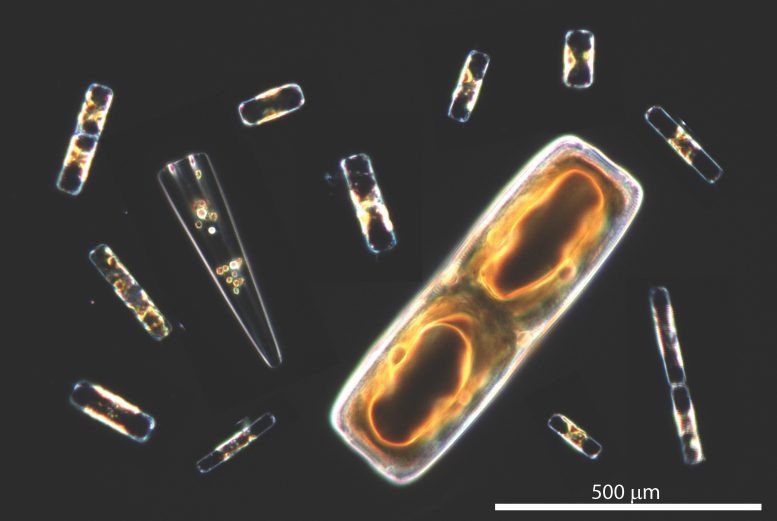
A composition image of diatoms, single-celled algae famous for their ornamental cell walls made of silica. Credit: Daniel Yee
One in every ten breaths you take contains oxygen produced by cellular mechanism in microscopic algae.
Take a deep breath. Now take nine more. One of those 10 breaths you just took was made possible due to a newly discovered cellular mechanism that promotes photosynthesis in marine phytoplankton, according to recent research.
Described as “groundbreaking” by a team of researchers at UC San Diego’s Scripps Institution of Oceanography, this hitherto unknown mechanism is responsible for between 7% and 25% of all oxygen production and carbon fixation in the ocean. Taking into account photosynthesis on land, it’s estimated that this process could be responsible for generating as much as 12% of the planet’s total oxygen.
Scientists have long recognized the significance of phytoplankton—microscopic organisms that drift in aquatic environments—due to their ability to photosynthesize. These tiny oceanic algae form the base of the aquatic food web and are estimated to produce around 50% of the oxygen on Earth.
The new study, published May 31 in the journal Current Biology, identifies how a proton-pumping enzyme (known as VHA) aids in global oxygen production and carbon fixation from phytoplankton.
“This study represents a breakthrough in our understanding of marine phytoplankton,” said lead author Daniel Yee, who conducted the research while a Ph.D. student at Scripps Oceanography and currently serves as a joint postdoctoral researcher at the European Molecular Biology Laboratory and University of Grenoble Alpes in France. “Over millions of years of evolution, these small cells in the ocean carry out minute chemical reactions, in particular to produce this mechanism that enhances photosynthesis, that shaped the trajectory of life on this planet.”
Working closely with Scripps physiologist Martín Tresguerres, one of his co-advisors, and other collaborators at Scripps and the Lawrence Livermore National Laboratory, Yee unraveled the complex inner workings of a specific group of phytoplankton known as diatoms, which are single-celled algae famous for their ornamental cell walls made of silica.
Understanding the “proton pump” enzyme
Previous research in the Tresguerres Lab has worked to identify how VHA is used by a variety of organisms in processes critical to life in the oceans. This enzyme is found in nearly all forms of life, from humans to single-celled algae, and its basic role is to modify the pH level of the surrounding environment.
“We imagine proteins as Lego blocks,” explained Tresguerres, a study co-author. “The proteins always do the same thing, but depending on what other proteins they are paired with, they can achieve a vastly different function.”
In humans, the enzyme aids kidneys in regulating blood and urine functions. Giant clams use the enzyme to dissolve coral reefs, where they secrete an acid that bores holes in the reef to take shelter. Corals use the enzyme to promote photosynthesis by their symbiotic algae, while deep-sea worms known as Osedax use it to dissolve the bones of marine mammals, such as whales, so they can consume them. The enzyme is also present in the gills of sharks and rays, where it is part of a mechanism that regulates blood chemistry. And in fish eyes, the proton pump helps deliver oxygen that enhances vision.
Looking at this previous research, Yee wondered how the VHA enzyme was being used in phytoplankton. He set out to answer this question by combining high-tech microscopy techniques in the Tresguerres Lab and genetic tools developed in the lab of the late Scripps scientist Mark Hildebrand, who was a leading expert on diatoms and one of Yee’s co-advisors.
Using these tools, he was able to label the proton pump with a fluorescent green tag and precisely locate it around chloroplasts, which are known as “organelles” or specialized structures within diatom cells. The chloroplasts of diatoms are surrounded by an additional membrane compared to other algae, enveloping the space where carbon dioxide and light energy are converted into organic compounds and released as oxygen.
“We were able to generate these images that are showing the protein of interest and where it is inside of a cell with many membranes,” said Yee. “In combination with detailed experiments to quantify photosynthesis, we found that this protein is actually promoting photosynthesis by delivering more carbon dioxide, which is what the chloroplast uses to produce more complex carbon molecules, like sugars, while also producing more oxygen as a by-product.”
Connection to evolution
Once the underlying mechanism was established, the team was able to connect it to multiple aspects of evolution. Diatoms were derived from a symbiotic event between a protozoan and an algae around 250 million years ago that culminated into the fusing of the two organisms into one, known as symbiogenesis. The authors highlight that the process of one cell consuming another, known as phagocytosis, is widespread in nature. Phagocytosis relies on the proton pump to digest the cell that acts as the food source. However, in the case of diatoms, something special occurred in which the cell that was eaten didn’t get fully digested.
“Instead of one cell digesting the other, the acidification driven by the proton pump of the predator ended up promoting photosynthesis by the ingested prey,” said Tresguerres. “Over evolutionary time, these two separate organisms fused into one, for what we now call diatoms.”
Not all algae have this mechanism, so the authors think that this proton pump has given diatoms an advantage in photosynthesis. They also note that when diatoms originated 250 million years ago, there was a big increase in oxygen in the atmosphere, and the newly discovered mechanism in algae might have played a role in that.
The majority of fossil fuels extracted from the ground are believed to have originated from the transformation of biomass that sank to the ocean floor, including diatoms, over millions of years, resulting in the formation of oil reserves. The researchers are hopeful that their study can provide inspiration for biotechnological approaches to improve photosynthesis, carbon sequestration, and biodiesel production. Additionally, they think it will contribute to a better understanding of global biogeochemical cycles, ecological interactions, and the impacts of environmental fluctuations, such as climate change.
“This is one of the most exciting studies in the field of symbiosis in the past decades and it will have a large impact on future research worldwide,” said Tresguerres.
Reference: “The V-type ATPase enhances photosynthesis in marine phytoplankton and further links phagocytosis to symbiogenesis” by Daniel P. Yee, Ty J. Samo, Raffaela M. Abbriano, Bethany Shimasaki, Maria Vernet, Xavier Mayali, Peter K. Weber, B. Greg Mitchell, Mark Hildebrand, Johan Decelle and Martin Tresguerres, 31 May 2023, Current Biology.
DOI: 10.1016/j.cub.2023.05.020
Additional co-authors include Raffaela Abbriano, Bethany Shimasaki, Maria Vernet, Greg Mitchell, and the late Mark Hildebrand of Scripps Oceanography; Ty Samo, Xavier Mayali, and Peter Weber of the Lawrence Livermore National Laboratory; and Johan Decelle of University of Grenoble Alpes.
The authors did not receive any funding for this study. Yee’s doctoral studies at Scripps Oceanography were supported by the Scripps Fellowship, the NIH training grant, and the Ralph Lewin Graduate Fellowship. Funds by UC San Diego’s Arthur M. and Kate E. Tode Research Endowment in Marine Biological Sciences supported the purchase of a microscope that was essential for the research.


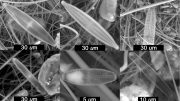


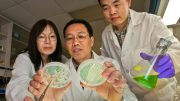
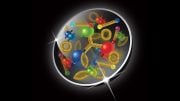
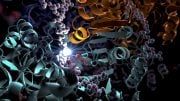

“They also note that when diatoms originated 250 million years ago, there was a big increase in oxygen in the atmosphere.”
It’s important to remember that atmospheric oxygen can only increase if carbon if carbon is buried away from the oxygen that photosynthesis created. The processs is the other half of the carbon cycle and is known as aerobic respiration. Thus any NET increase in Earth’s oxygen had to be accompanied by carbon burial. An increase in diatoms would have little effect because their “skeletons” are silica which contains no carbon. It was the evolution of carbonates-secreting organisms toward the end of the Precambrian that began the burial of limestones that allowed oxygen to increase over that buried by organic matter alone.
Nonsense. Can atmospheric nitrogen only increase if something else is “buried”? Give me a break.
You touch on something that the university press department put into their press release from prompting by the authors from there (annoyingly Cell doesn’t present the usual author affiliation information). It is not in the paper, and the first hit on the topic is a paleo-climate article which makes the claim problematic:
“About 635 million years ago the rise of Ediacara fauna, found in the Flinders Ranges in South Australia, signifies a global rise in atmospheric oxygen level. This is because the protein molecule of multicellular organisms requires oxygen for its synthesis.
Figure: The Phanerozoic atmospheric O2 evolution curve. Berner et al., 2007.
Atmospheric oxygen levels rose significantly from about 0.54 million years ago, reached a peak in the Permian about 300 – 250 million years ago, then dropped to the Jurassic from about 200 million years ago, following which they rose slowly to present levels, shown in the graph left.”
[“The rise and fall of oxygen”, 2013.]
Due to their silica exoskeleton, the diatoms are pretty well dated to have evolved 200-150 million years ago. So yes, they seem to have stabilized the silica and carbon cycles but the increase is not big compared to other periods of increase and starts from a low level.
You are also referring to the “poop” hypothesis, that carbon waste concentration (with or without burrowers and skeletons and exoskeletons preventing release) was central for the atmosphere oxygenation. That is a precondition, which diatom dominated ecology evolving later. Now there is no question about the participation of diatoms in this cycle:
“Thus, diatoms are one of the main players in this biological carbon pump, which is arguably the most important biological mechanism in the Earth System allowing CO2 to be removed from the carbon cycle for very long period.” [Wikipedia]
“That is a precondition, which diatom dominated ecology evolving later.” – That is a precondition, with diatom dominated ecology evolving later.
Am I having a senior moment, making up memories? I asked myself that question because I thought I already knew that. Not all the enzymatic details, but the idea that phytoplankton produces much of the Earth’s Oxygen.
This publication justifies the suck-up of FAT MONEY that could have gone into affordable housing, poverty elimination, healthcare provision, or anything other than supporting extreme income and social stratification.
You are having a non-educated moment, ranting about how science which greatly improves all what you ask for from very little investment should be stopped due to your uninformed opinion.
People can chew bubblegum and walk simultaneously, society can do social improving science and other social activities at the same time too.
There is no justification for the (tragically) repeating rants against social improvement activities, especially if they like this one is a very small fraction of taxes.
Interesting, the proton pump is used for carbon scavenging:
“Since intracellular digestive vacuoles are
ubiquitously acidified by V-type H+
-ATPase (VHA),3 proton pumps were proposed to acidify the microenvironment around secondary chloroplasts to promote the dehydration of dissolved inorganic carbon (DIC)
into CO2, thus enhancing photosynthesis.4,5 We report that VHA is localized around the chloroplasts of
centric diatoms and that VHA significantly contributes to their photosynthesis across a wide range of oceanic
irradiances.”
Their speculation on the endosymbiosis evolution is analogous to ancestral eukaryote mitochondrial symbiosis in that it involves arrested phagocytosis.